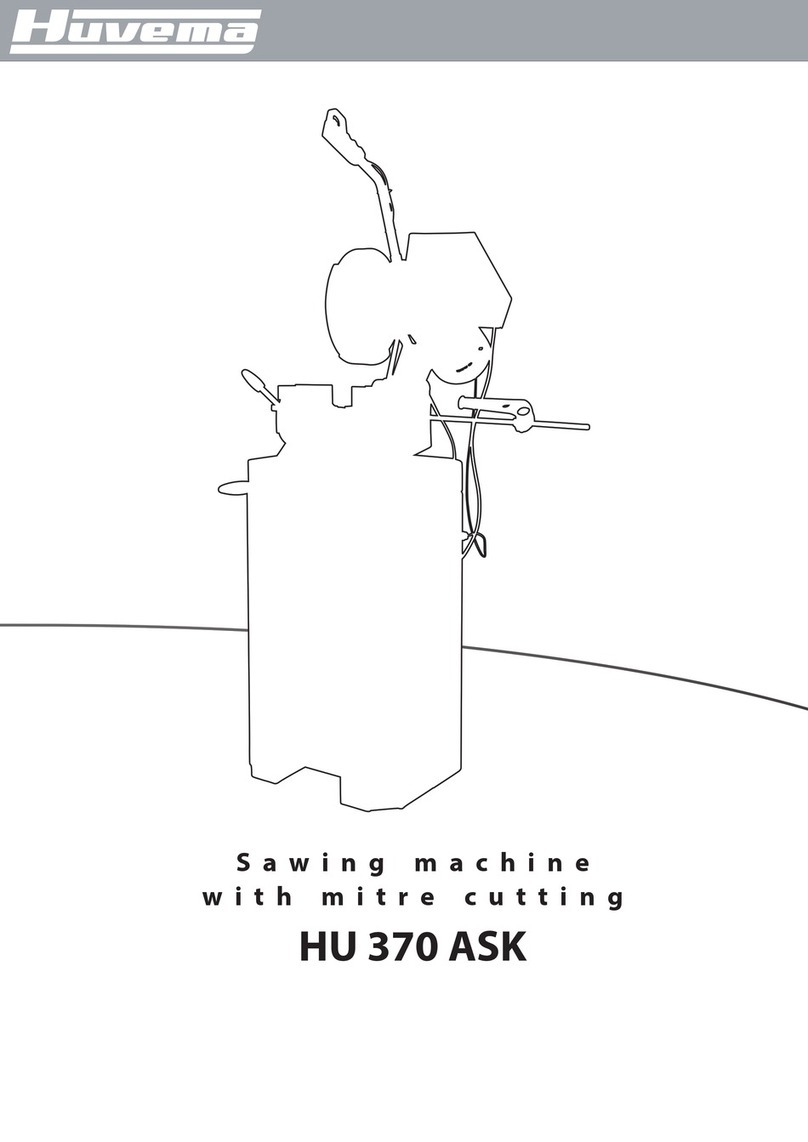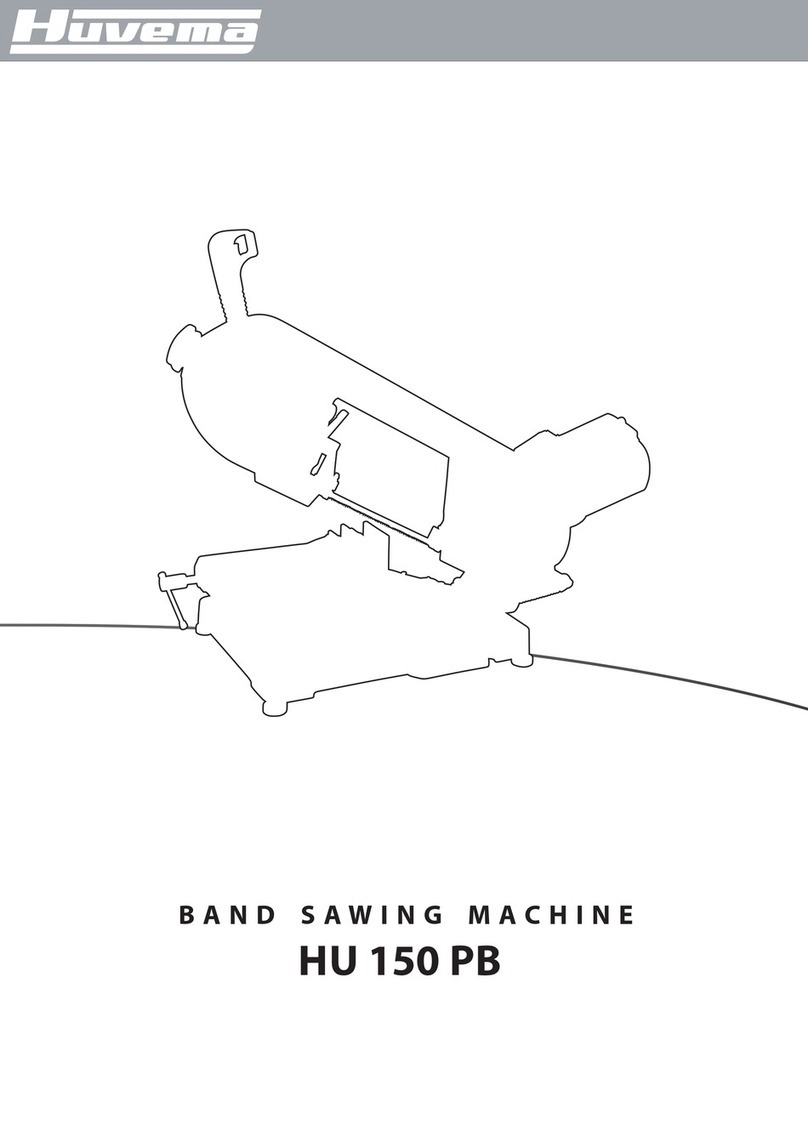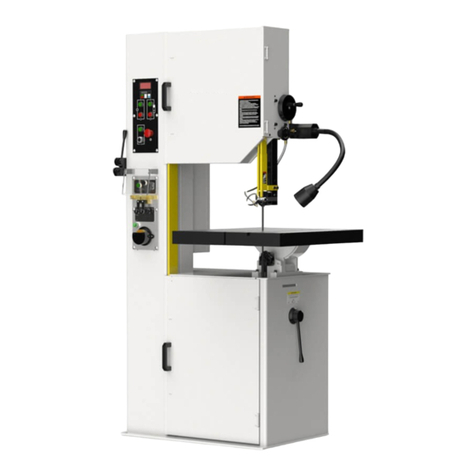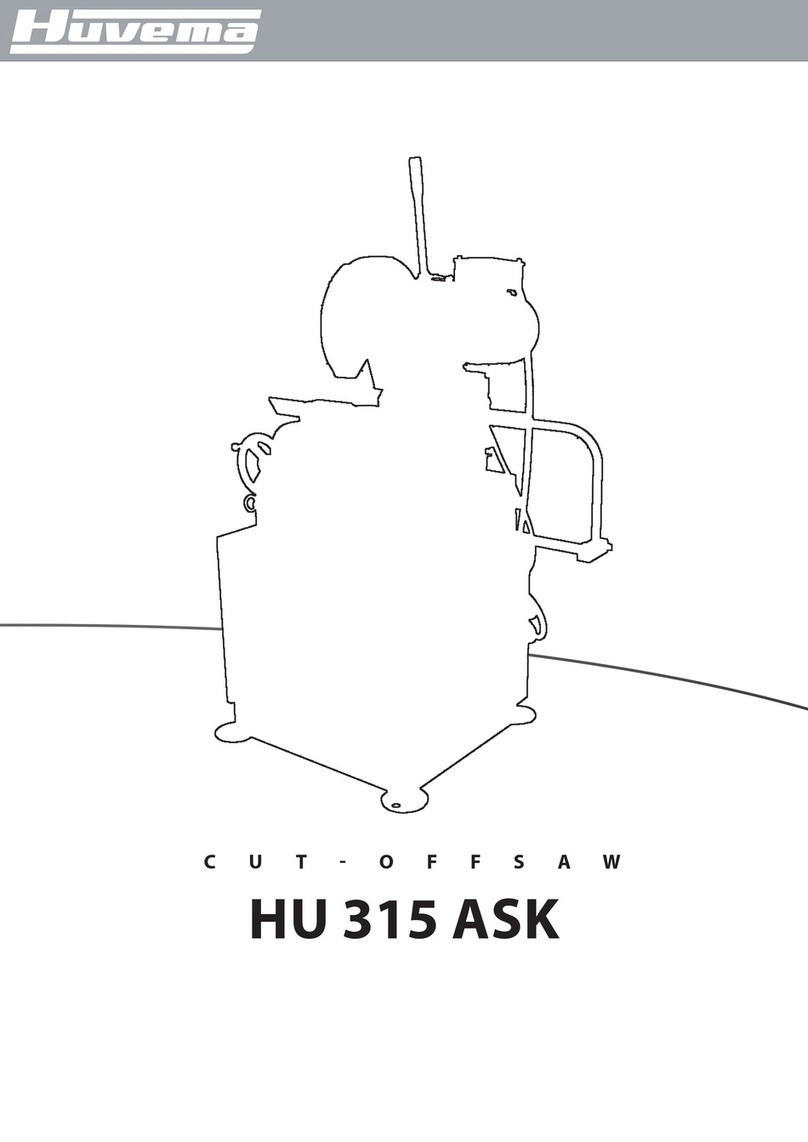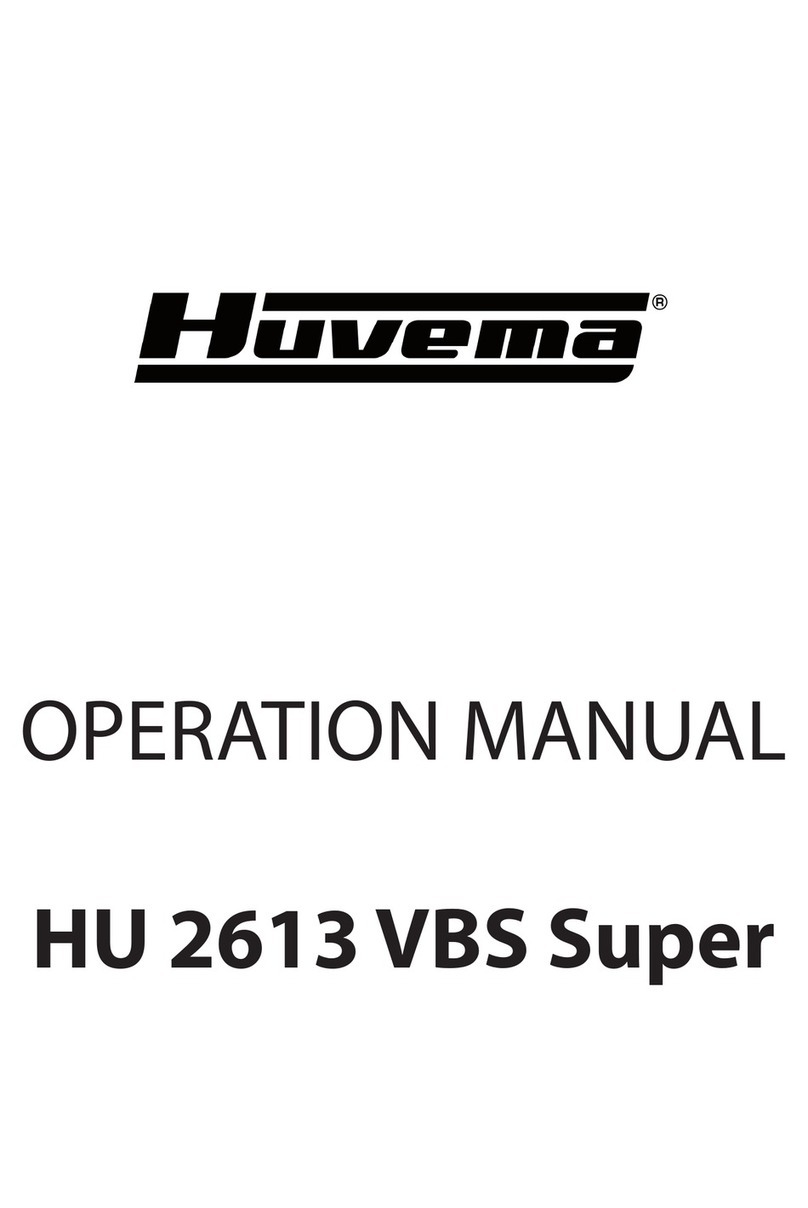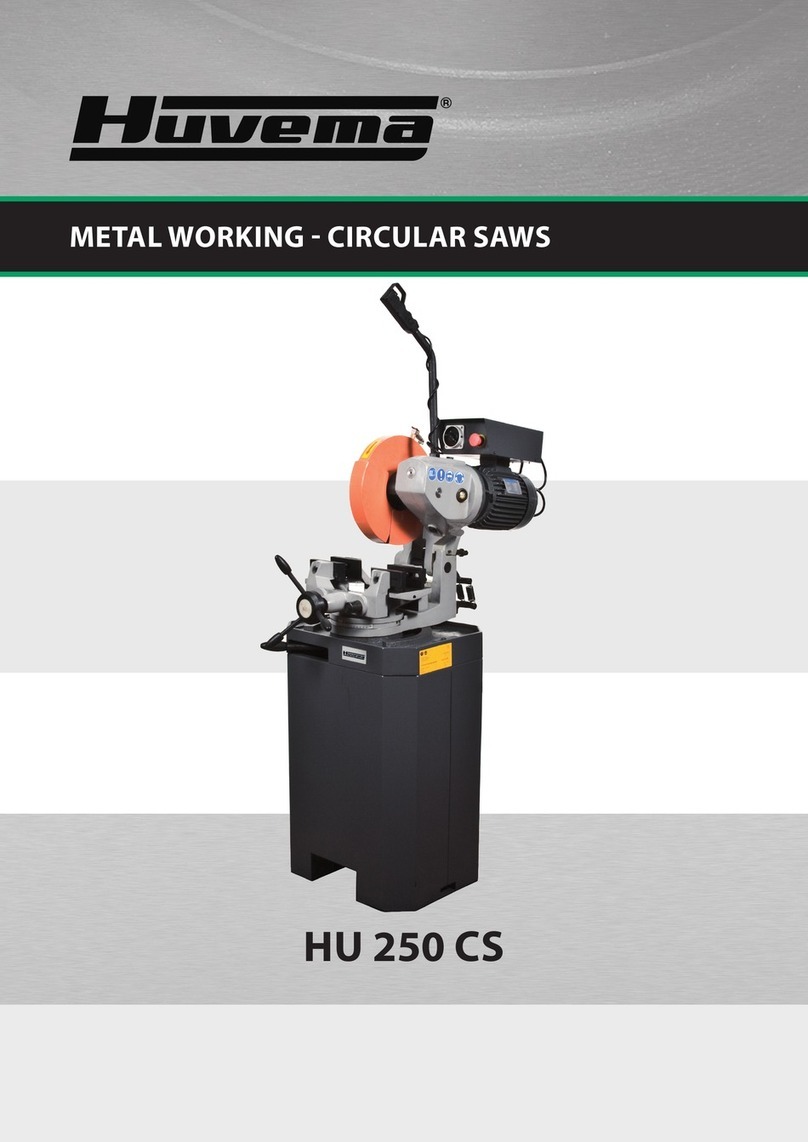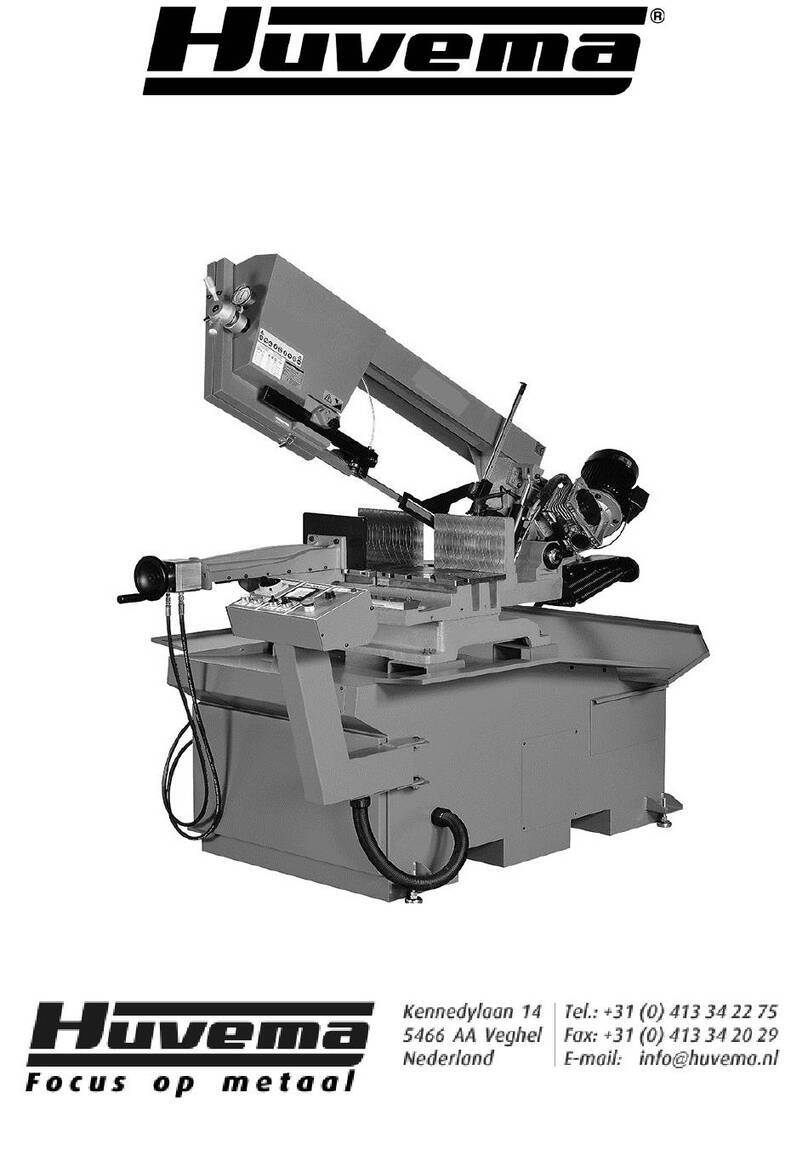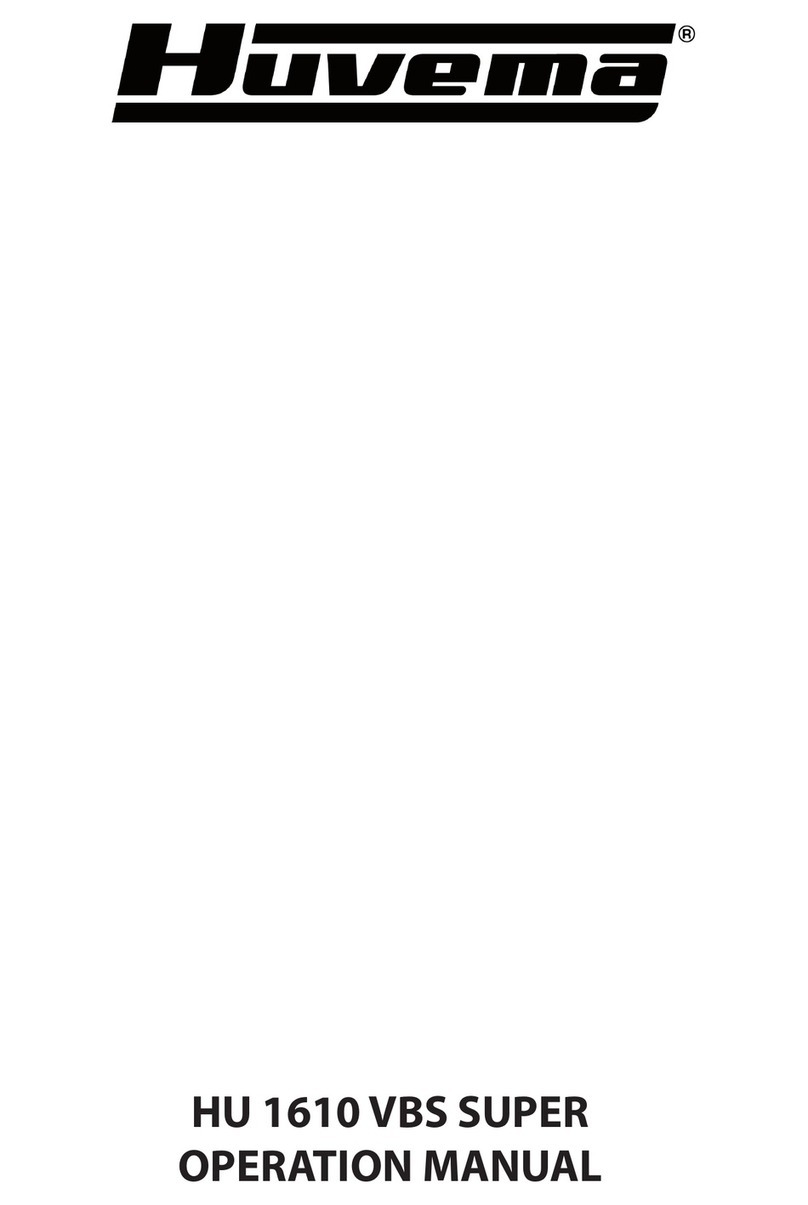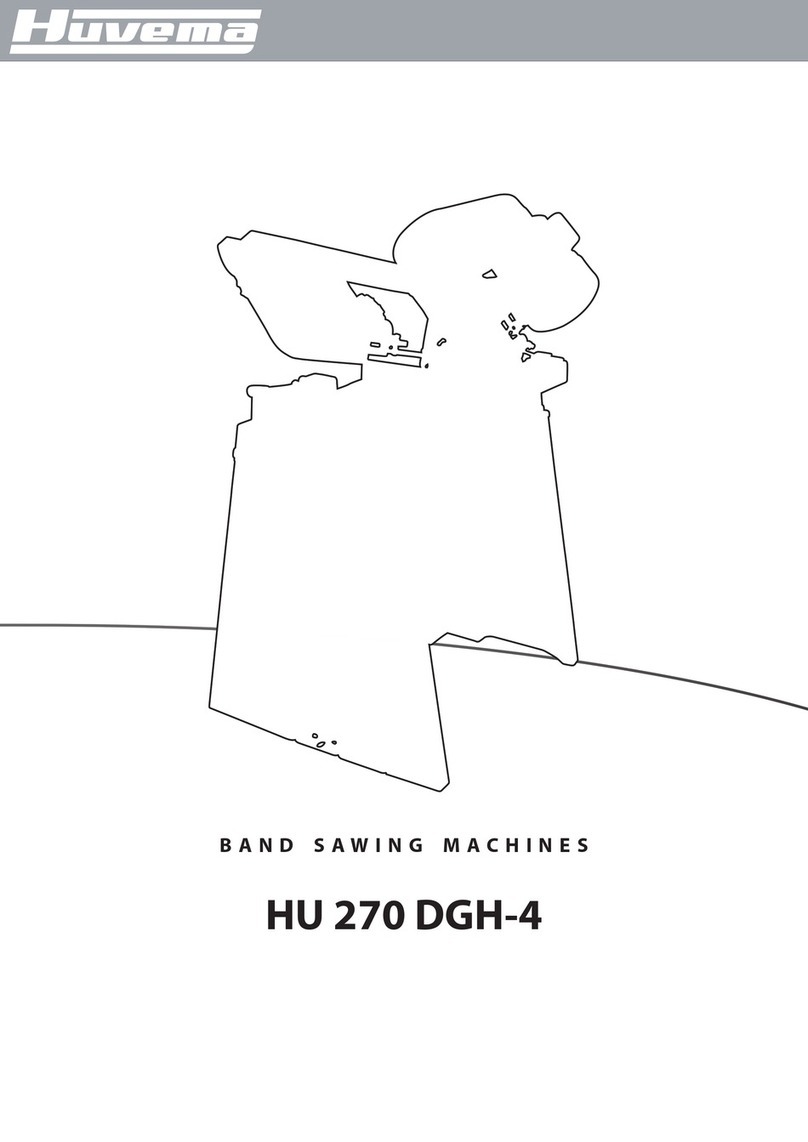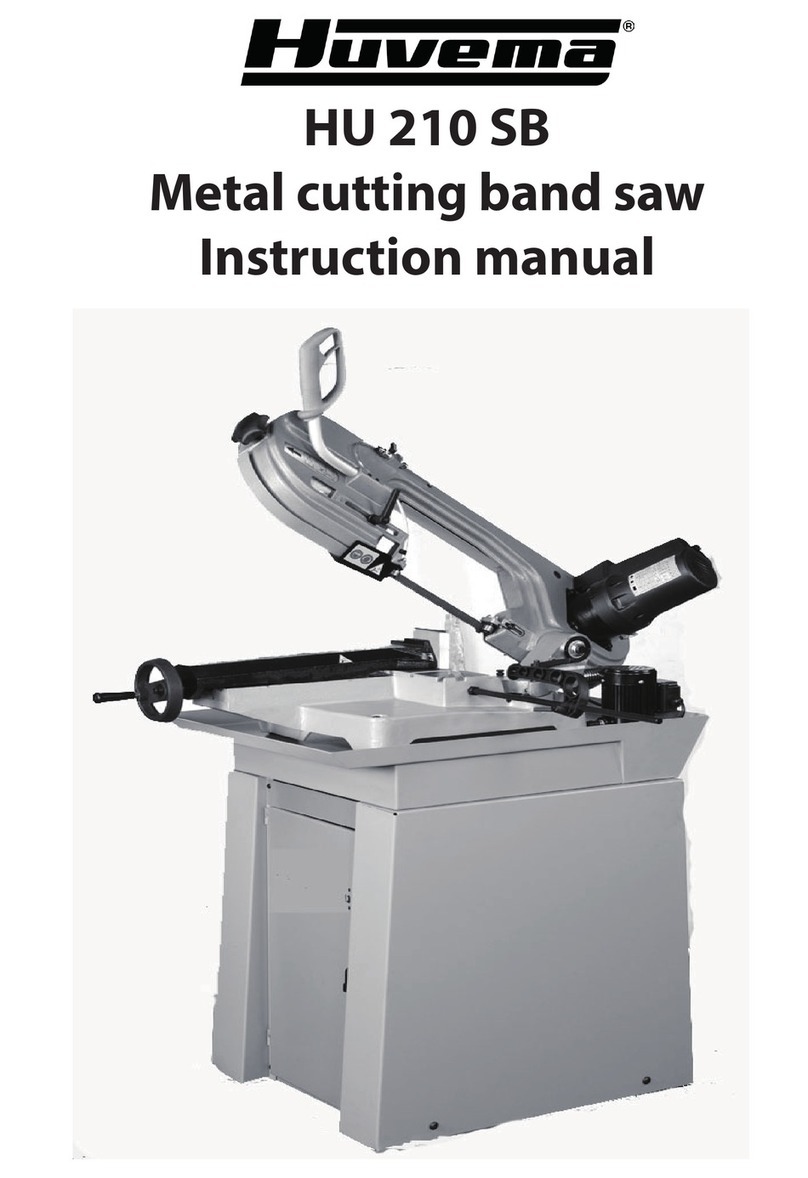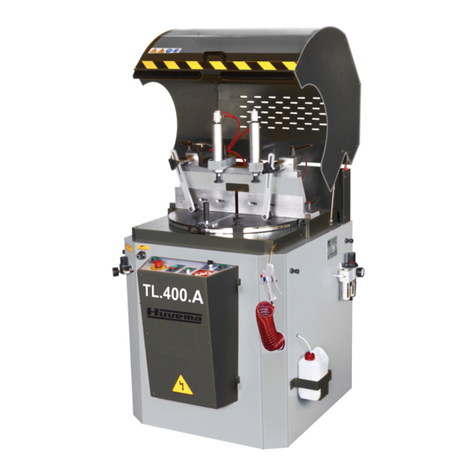2.8 Securing to foundation
Position the machine on a flat and level foundation
of reinforced concrete. Level machine and anchor
it to the foundation with anchor bolts. Maintain a
minimum distance of 800mm from the rear of the
machine to the wall. Position the anchors using
screws and expansion plugs or tie rods sunk in
cement.
2.9 Leveling the machine
The operating accuracy of all precision machinery
depends on the accuracy of the installation of the
machine. Manufacturing tolerance of the machine
can only be guaranteed if the machine is firmly
and properly installed. Once the machine is
lowered on the prepared foundation, machinist
levels should be used alternately on the vice slide
plates and work feed table, adjust the left to right
and front to back level of the machine with leveling
bolts.
- When leveling left to right level, adjust left side to
be approximately 3mm higher than the level of the
right side. This will provide proper return of the
cutting fluid. After proper leveling of the machine,
use anchor bolts to secure to the foundation.
Caution: All leveling bolts should support the
weight the machine evenly.
2.10 Deactivation of machine
If the machine is to be out of use for a long period,
it is advisable to proceed as follows:
1) Disconnect from the power supply
2) Loosen the tension on the blade
3) Release the bow return spring
4) Empty the coolant tank
5) Carefully clean and grease the machine
6) If necessary, cover the machine.
Dismantling (due to deterioration and/or
obsolescence)
As a General Rule,
If the machine is to be permanently demolished
and/or scrapped, divide the material to be
disposed of according to type and composition, as
follows:
1) Cast iron or ferrous materials,composed of
metal alone, are secondary raw materials, so
they may be taken to an iron foundry for re-
smelting after having removed the contents
(classified in point 3).
2) Electrical components, including the cable and
electronic material (magnetic cards, etc.), fall
within the category of material classified as
being assimilated to urban waste according to
the laws of your local, state, or federal
government, so they may be set aside for
collection by the public waste disposal service;
3) Old mineral and synthetic and/or mixed oils,
emulsified oils and greases are considered
hazardous or special refuse, so they must be
collected, transported and disposed of at a
special waste disposal service.
NOTE: The standards and legislation concerning
refuse is in a constant state of evolution, therefore
is subject to changes. The user must keep
informed of the regulations at the time of disposal
as these may differ from those described above.
3 DESCRIPTION OF MACHINE PARTS
3.1 Control panel
A. Main connect switch – main power
B. Main power indicator light – indicates that main
power is active
C. Hydraulic flow control start switch – actives
hydraulic power
D. Operation mode switch – selects either
automatic or manual operation mode.
D1. Manual operation mode – press switch D until
the manual mode’s indicator light shows up.
D2. Automatic operation mode – press switch D
until the automatic mode’s indicator light
shows up.
E. Bow up switch – press to raise the saw bow
F. Vise open switch – press to open the vise
G. Vise close switch – press to close the vise
H. Bow down switch – press to lower the saw
bow
I. Cycle start switch – press to begin operation
J. Stop switch – press to stop operation cycle
and return to start position
K. Cutting feed rate – adjust the rate of cutting of
the saw bow.
L. Key lock power switch – to start or stop power.
L0. Power off switch – key switch to turn power off
L1. Power on switch – key switch to turn power on
M. Emergency Stop Button – Press to stop all
machine functions
N. Blade tracking switch – press to activate blade
tension and set the blade tracking.
O. Coolant start switch – press to activate or stop
coolant flow
P. Counter – counts the pieces cut, press the
button to reset units to zero.
Q. Stroke height switch – limits the stroke height
to eliminate the wasted motion and time. The
stroke height setting is according to material
height. Maximum height limit is 330mm (13”).



